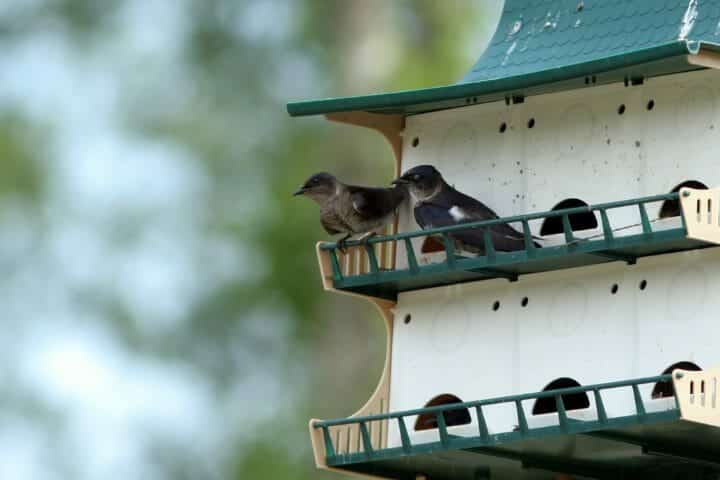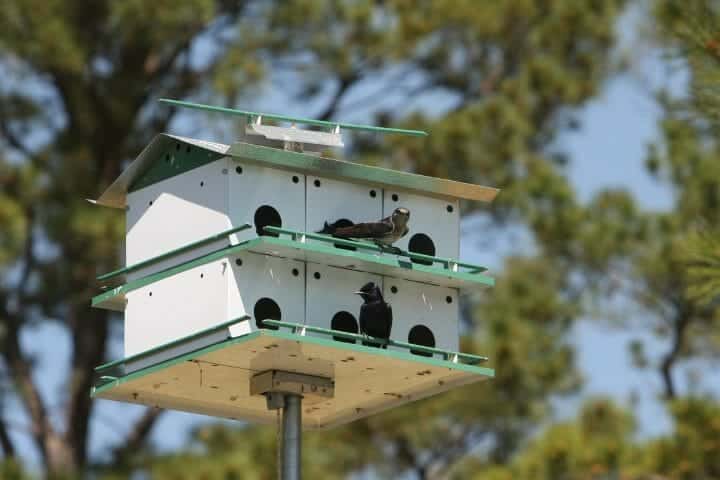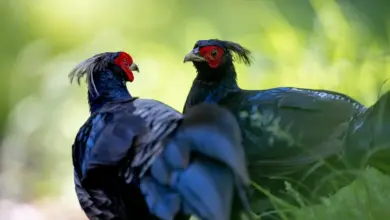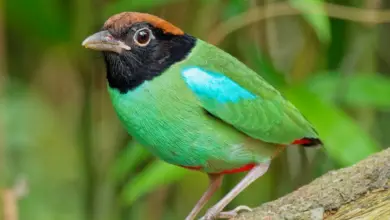What Direction Should A Purple Martin House Face? Helpful Tips
As a purple martin landlord (yes, that’s the technical term), you might have questions such as what direction should a purple martin face, how big the nest should be, and so on. We will try to answer all these questions for you.
Purple Martin doesn’t really care which direction their house is facing. While they are picky about which homes they choose to live in, the direction isn’t one of their selection criteria.
Conventional logic tells us that you should always face a bird’s nest away from the direction of the wind. You can follow that advice, but it doesn’t really matter to the birds.
What you should think about are things like
- The size of the birdhouse
- The right color of the Martin home
- The proper nesting materials for a sturdy and durable home
- How much space will they get to fly around
- How high up should the house be built
- Protecting them from extreme temperature and weather conditions
- Keeping them away from sparrows, snakes, owls, and other predators.
We will talk more about all this in the blog below.

What Kind of House Should You Put Up For Martins?
Type of Birdhouse
Purple martins are social birds that live in flocks, so they need a large house to live in.
As such, there is one type of birdhouse that attracts them the most – the apartment-style birdhouse with many individual homes built into it.
If you can’t buy or build that kind of birdhouse, you can always sting together several birdhouses to make it look like a clustered colony.
Another popular way to attract them is to put up a hollowed-out gourd, which has enough space to house many of them.
You can either put up a natural gourd or buy a gourd rack from the market. These nests also look amazingly beautiful in your garden.
Size of the House
Getting the size of the house and its opening is very important. Get it too big, and you are leaving the birds and hatchlings at the mercy of predators. Make it too small, and the adult birds won’t be able to get in.
Make sure that the entrance hole is between 1.75 to 2.25 inches large. One popular strategy is to use crescent-shaped openings, which other birds find difficult to enter, but purple martins can easily negotiate.
Also, make sure that the entrance to the nest is slightly higher (about 1-2 inches) than the floor of the nest because otherwise, the babies might fall down and hurt themselves. Usually, a one-inch height for the entrance is perfect.
The nest itself should be about half a foot each in length, width, and height, so that it has enough space for both the adults and their hatchlings.

Color of the House
Everyone has their preference for the color of their house, and so do Purple Martins! These birds love to live in white-colored houses.
The color white reflects light instead of absorbing it, so white-colored birdhouses are cooler in the summer.
You can add a dash of color if you love creativity, but make sure not to add too much of other colors. For example, you can add some color to the trim or the roof.
Sturdiness
When you are putting up the martin house, make sure that you attach it firmly to the pole.
It should not move about or rotate in strong winds. Martins can easily become confused and disoriented, which can be very harmful to them.
While they don’t care about the direction of the house, they do care about consistency. If the house rotates on the pole and the direction of the entrance changes, they will get disoriented.

How High Should You Put it Up?
Unfortunately, purple martins have a lot of predators in the open. Cats, snakes, pigeons, raccoons, owls, and many other creatures prey on these small birds.
So it is best to make sure that you put up your purple martin house at least 12 to 20 feet high on a pole or other sturdy, tall objects.
If you have trees or shrubs nearby, make sure that you keep them higher than them.
In the wild, purple martins make stick houses near a source of water. In each clutch, they can lay as many as five to seven eggs, so the house has to be large enough to hold the entire family.
In most cases, eggs hatch between 12-14 days after laying, and both mom and dad help the chicks to survive and fledge. After about a month, the whole family moves apart and finds new places to nest.
Interestingly many martin bird species don’t bother building nests at all; they just depend on humans to hang one out for them.
Where Should You Put it Up?
When you are putting up a nest for purple martins, make sure they have a lot of space around them to fly.
They love open spaces, so it is a good idea to put the house somewhere they can fly about easily.
One common mistake that people make is to put the martin house in the middle of their garden or yard.
But that just restricts the space the martins have to roam around, especially if you have large trees surrounding your garden.
Instead, keep the house somewhere closer to the garden boundary, but make sure there are no obstructions nearby so that they can fly around easily.
Another thing to note is that you should not expose the house directly to the strong afternoon sun. Try to keep it in the shade, or at least so that the entrance of the house is in the shade.
Direct sunlight and heat in the summers would make the home very uncomfortable for the martins.
If you have a bird bath or some body of water nearby, it’s best to place the house as close as you can to it. Purple martins are excellent swimmers and love to dive into the water.
Make sure that the house has no big branches or other obstructions nearby. Do not put it near a large fence either. Just give them lots of space to roam around.

Home Maintenance
Purple martins often use the same nest each year. So every fall, take down your purple martin house and clean it out. Remove dust, dirt, debris, feathers, and anything else that might be harmful to them.
Every few years, the paint will start to chip off, so you should apply a new coat of white paint.
When you have the martins living in the house, don’t leave out food when it’s too cold or about to rain.
Storms and extreme weather are dangerous for these birds. In the summer, leaving the food out can cause mold, and that can also be dangerous for the birds.
When to Setup The House?
Towards the start of spring, martins will start to come near your house looking for nesting places. If you are putting up a new nest, it’s not a good idea to put up the birdhouse immediately; just wait for 3-4 weeks.
The first birds that come back from the winter migration will typically go to their old nesting place, no matter how attractive the new one looks.
The younger birds will start to pour in later, the first-timers who are looking for a home. These are the ones that you should ideally attract to your birdhouse.
Another reason to wait is that starlings also come in at about the same time as martins, and starlings are natural predators for these birds.
If you set up your house too early, starlings might start inhabiting it, and then you will have no place for your martins.

Protection
Purple martins have many, many predators. Don’t let your birds become fodder for some hungry cat or snake.
Put up nest box guards around the martin house. Also, make sure that the pole has a predator guard on it, too, so that the martins get protection from predators trying to climb up.
Wrap Up
Purple Martins are beautiful, sociable, and beneficial birds who love making their homes in human birdhouses.
You just need to know how and where to put up a house for them, and sooner or later, they will find the home and make it their own.
Just follow some of the tips that we have shared in this article, and you can get to see a lifetime of these beautiful birds singing near your house.
Once they choose a home, they make it theirs for generations to come, so a little effort on your part will go a long way.





